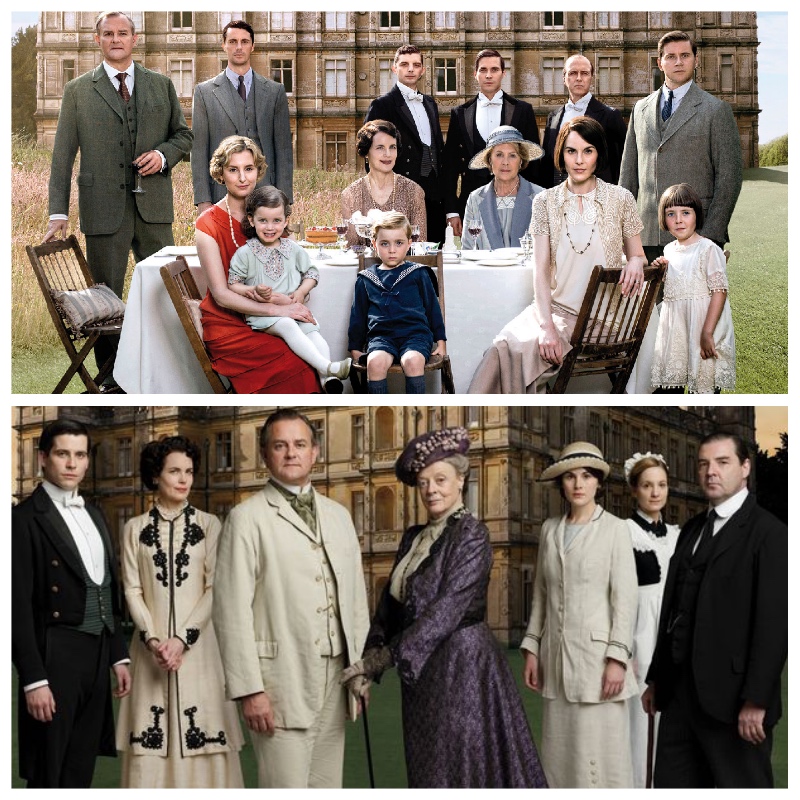
- Television
When The 20th Century Was New: A Look Back At Downton Abbey
And so here they are: on the cusp of the events that would become the bulk of the 20th Century’s legacy, seasoned but still optimistic, at the end of tumultuous but glorious journey. Through six seasons of Downton Abbey the Crawleys, their servants and extended family and the inhabitants of the fictitious village neighboring their estate dealt with the sinking of the Titanic, the Spanish Flu epidemic, World War I, Irish nationalism, the rise of the Labour party, the first seeds of Nazism and the movement for women’s right to vote. Not to mention automobiles, electricity, telephones, jazz, cocktails and the end of corsets.
In the process, Downton Abbey amassed a respectable cache of accolades, including nine Golden Globe nominations and four wins: best miniseries in 2012; best supporting actress in a series, miniseries or motion picture made for television in 2013, for Maggie Smith; and two consecutive wins for Joanne Froggatt in the same category, in 2015 and 2016. Its first season entered the Guinness Book of World Records as the most critically acclaimed English series of 2011, and its first two seasons combined generated another landmark – the most nominations (27) of any international television series in the history of the Emmys.
Premiering in the UK in September of 2010, and crossing the pond to make its mark on American television in January of 2011, Downton Abbey joined a rising tide of superior scripted content that ushered in the new golden age of television we are enjoying today. To the harsh, violent, sometimes cynical urgency of American series such as The Sopranos, Breaking Bad and Mad Men, Downton Abbey offered a gentle counterpoint of polished British period drama, a vision of the birth of the 20th Century through the perspective of an aristocratic family in Northern England.
The idea of what would become Downton Abbey came to seasoned TV producer Gareth Neame after seeing Robert Altman’s Gosford Park, which earned five Golden Globes nominations and an Oscar of best original screenplay for Julian Fellowes. Intrigued by the possibilities of a continued look into the life of upper class Brits in the post Edwardian era, Neame enrolled Fellowes to develop the series. Fellowes was reluctant at first, not wanting to do a mere extension of Gosford Park. His interest in politics and his enthusiasm for American TV gave him the foundation for the new series. “It’s apparently a traditional English period drama with everyone wearing lovely clothes”, Fellowes told us in 2012. “But in fact the rhythm and the construction are much more of a modern American show, much closer to sort of West Wing and E.R.”
In the mix of romance, drama and comedy that became Downton Abbey’s winning formula, characters became larger than life and were quickly adopted by audiences around the world: the hard-to-please Lady Mary (Michelle Dockery); Barrow, the evil footman (Rob James-Collier); the long suffering John Bates (Brendan Coyle) and his bride Anna (Joanne Froggatt). And, above all, Maggie Smith’s indomitable Dowager Countess of Grantham, she of the stinging one-liners and fulminating looks.
As the series progressed, Downton – and by extension the Dowager Countess, its unofficial Voice of The Aristocracy – were constantly criticized for its benevolent gaze towards old-fashioned social hierarchy, in which blue-blood families were always well intentioned and kind to the lower classes, while holding firmly to their own centuries-old privileges. Never mind – the Countess will probably remain as Downton Abbey’s most beloved character, a symbol, perhaps, of how our 20th century ancestors forged their will and stamina in an era every bit as vertiginous and mutable as today.
Check our exclusive interview with Joanne Froggatt, here.

